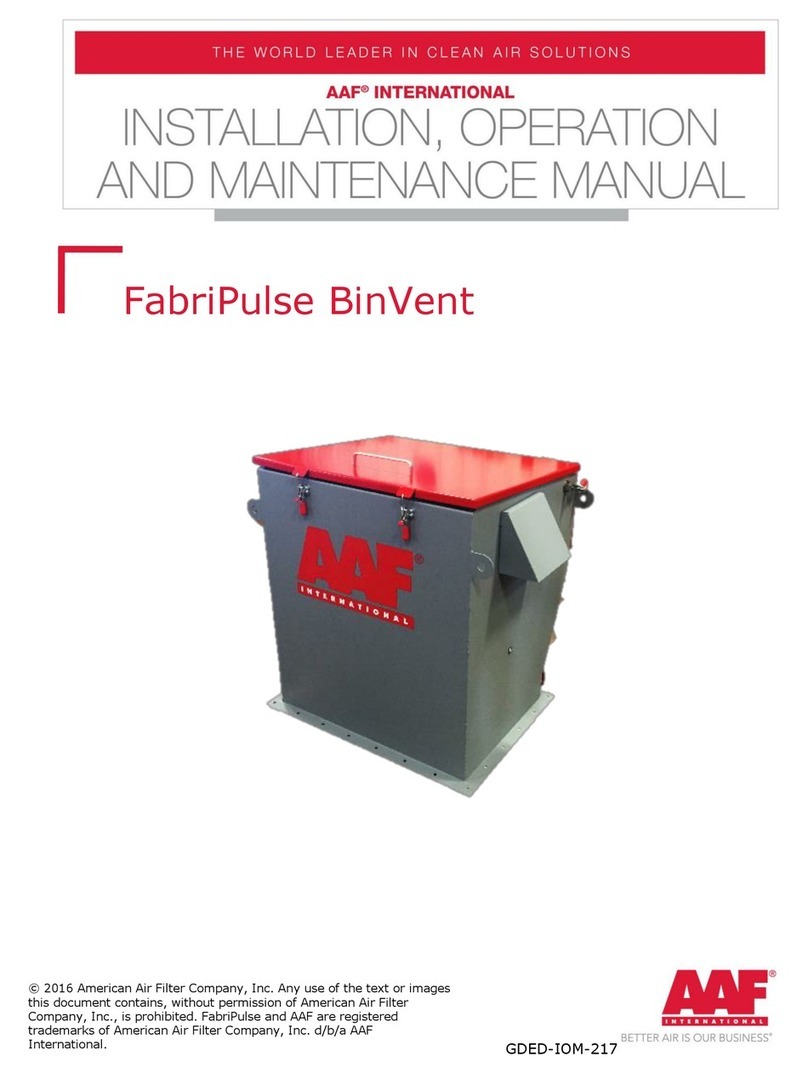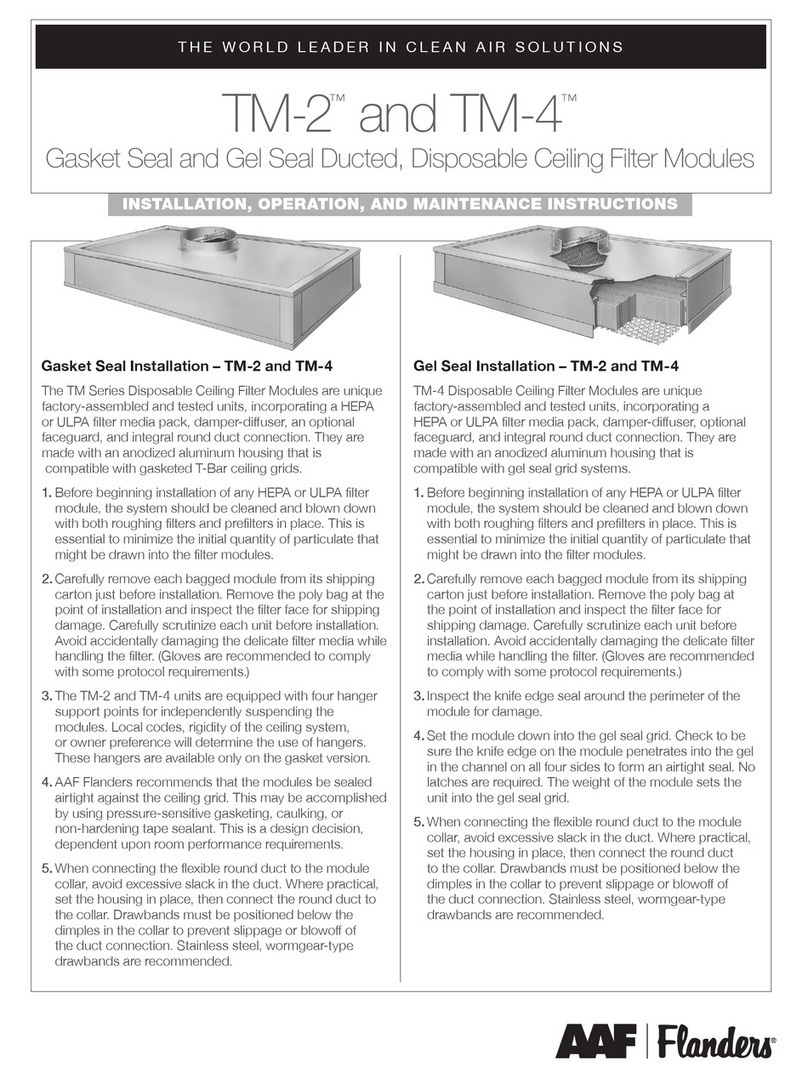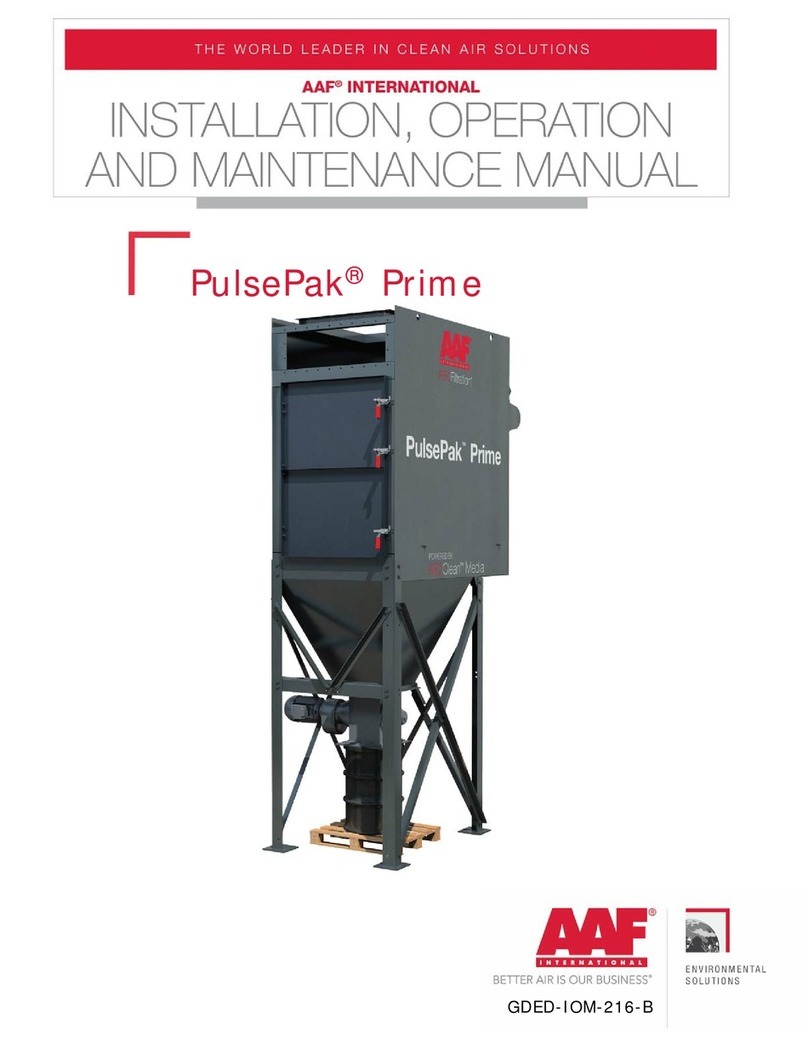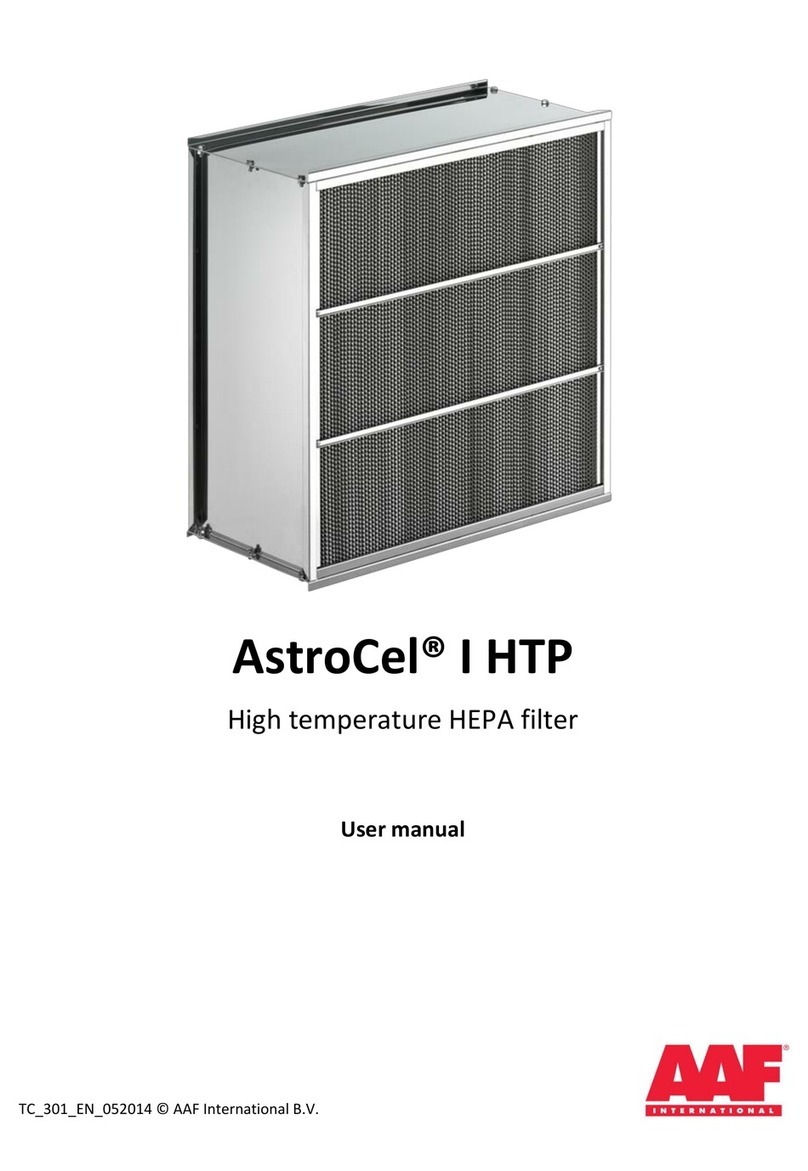
1.2 Packaging and Shipping, Receiving and Inspection, Handling
and Storage
1.2.1 Packaging and Shipping: Unless otherwise defined in the
purchase order and agreed byAAF, the FAH and filters are
packaged for domestic transit and shipped FOB theAAF factory.
The method of shipment will be as specified in the customers
purchase order toAAF.
1.2.2 Receiving and Inspection: Obtain a copy of the purchase
order, the product drawing that was submitted by AAF in
association with the order, and a copy of the bill of lading, along
with any other shipping papers. Upon receipt of the equipment, or
any part thereof, these documents shall be used to ensure that the
correct product has been received.
For maximum protection, complete the following steps upon receipt
of the FAH filter bank and filters:
— Inspect the shipment and all associated documentation. Notify
the carrier immediately if there is any visible damage to the
packaging or the equipment, or a discrepancy in the shipping
papers and, if necessary, file an immediate claim with the carrier
against such damage or discrepancy.
— Confirm that the equipment received agrees with the contents
of the shipping papers.
— Confirm that the shipping documents agree with the purchase
order. Refer to the product drawing submitted for the order as
necessary.
— If it is determined that any equipment ordered on the purchase
order has not been delivered and is not accounted for in the
shipping papers contactAAF international immediately by calling
1-800-477-1214. Reference theAAF control number which will
be listed on the shipping papers.
Each shipment may include:
— Individually packaged FrontAccess Housings.
— Packaged particulate filters.
— Packaged gas phase chemical filter cassettes.
Note that the housings and the particulate and gas phase filters
may ship from different locations and be received at different times.
1.2.3 Handling and Storage: Following receipt, inspection, and
acceptance of the equipment, and prior to assembly and installation,
the FAH and the particulate and gas phase filters shall be handled
with great care. The components shall be retained and stored in their
protective packaging until immediately prior to installation. Care shall
be taken to ensure that the packages are not dropped or subjected to
any impact loads.
At all times the equipment shall be protected from exposure to weather.
The equipment shall be stored in a clean, dry, temperature controlled
environment.All items shall be stored on pallets so that they are
elevated above grade. The FrontAccess Housings and particulate and
gas phase filters shall not be stacked more than three (3) cartons high
to prevent crushing. Only FAH shall be stacked on FAH, particulate
filters on particulate filters, and gas phase filters on gas phase filters.
The gas phase filters ship inside a carton enclosed in transparent
protective plastic. Under no circumstances shall the filters be removed
from this plastic protection until immediately prior to installation.
Filter products shall not be stored in areas where they may become
contaminated by chemicals, either acids or alkalis, in liquid, vapor, or
gaseous form.
1.3 Product Descriptions
1.3.1 Front Access Housing (FAH): Each FAH will be received
individually in a carton. Depending on the quantity supplied, these
cartons may be palletized and banded together. The FAH is supplied
in three styles: Type MD, Type HD, or Type CG (as shown at top of
page 3) and will be the full size 2 high x 2wide housings shown, or
depending on the size of the filter bank required, may include half
size housings. Half size housings are available in half height (1 high
x 2wide) or half width (2high x 1 wide) sizes, except for the Type
CG which is only provided in the half width size. Half size housings
hold half the number of gas phase cassettes as full size housings
and use half size particulate filters.
Any particular filter bank will be assembled using only one type of
housing (Type MD, Type HD or Type CG). Housing types will never
be mixed in a single filter bank.
1.3.2 Gas Phase Chemical Filter Cassettes: Gas phase filter
cassettes are shipped in cartons and plastic bags. The carton
shown contains a single 6 high x 24 wide x 18 deep Type MD
cassette which is supplied as two (2) 6 high x 12 wide x 18 deep
half cassettes.
2
































